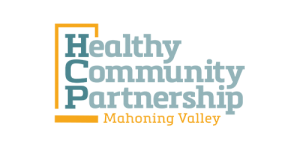Moment of the Month November 2021: It’s Time to “CHA-CHA,” again
Representatives from Mahoning & Trumbull Counties Kicked-Off the Start of the Next Community Health Assessment
It’s that wonderful time again. No, not that wonderful time. It’s time for our public health and healthcare partners to begin to update the Community Health Improvement Plans (a.k.a. CHIPs) and launch a new Community Health Assessment (a.k.a. CHA).
Not quite as glittery and glamorous, but it is an incredibly valuable, priceless process that is a bit of a delicate, dynamic dance, like the cha-cha.
Before we get into the step-by-step, let’s see what the Center for Disease Control and Prevention has to say about these CHAs and CHIPs.
A Community Health Assessment (CHA) or Community Health Need Assessment (CHNA):
Refers to a state, tribal, local, or territorial health assessment that identifies key health needs and issues through systematic, via comprehensive data collection and analysis.
A community health assessment gives organizations comprehensive information about the community’s current health status, needs, and issues.
A Community Health Improvement Plan (CHIP) is:
A long-term, systematic effort to address public health problems based on the results of community health assessment activities and the community health improvement process.
Information [from the CHA or CHNA] can help with developing a community health improvement plan by justifying how and where resources should be allocated to best meet community needs.
Still a little foggy on the alphabet soup? Mahoning County Public Health’s Director of Health Equity Strategies and Initiatives and HCP Steering Committee Co-Chair, Michelle Edison, shares her perspective on the who, what, why, and how of this process. Watch and listen here:
At their core, as defined by the CDC and reiterated by Ms. Edison, the CHA/CHIP is a required data recording and reporting process for public health and some healthcare organizations. But, as Ms. Edison explained, these routine reports can–and should– be much more than that.
Through the CHA/CHIP process, health-focused organizations can have health-focused conversations with community stakeholders that have influence on and are influenced by factors that impact health, wellness, and prosperity. Perhaps the most important of these stakeholders are residents whose lives and livelihoods are central to the story of any community’s past, present, and future.
However, as Ms. Edison cautions, connections and conversations with residents about their health and the health of their communities should not begin and end with a formal process like a CHA. Partners addressing and hopefully improving health should strive to build relationships that are more than a formality. These relationships should feel real and be built on a foundation of trust, understanding, and mutuality.
Each CHA offers new opportunities to create these partnerships, to learn how to trust each other, to learn how to support each other, to learn how to move forward together. Much like the cha-cha dance, the CHA can bring separate, distinct, unique entities together and teach them how to move as one–united in purpose, passion, and direction.

From Harvard Report: Data from CDC and APM research labs both show corroborating evidence that COVID-19 mortality rates are higher among BIPOC communities. These numbers are age-adjusted data from APM research lab.
This round of the CHA is special–it’s the first, hopefully the last, to commence during a global pandemic. Going on nearly two years now with nearly 800,000 lives lost in the United States alone and countless milestones missed, the level of loss is almost unfathomable. But, as many have said in different ways, the chaos and disruption of COVID-19 has ripped off the curtain, exposing health disparities–many of which have been hidden in plain sight–that impact communities capacity to be healthy and prosperous places. The exposure of these health disparities and the inequities that enable their incubation is an odd, awkward silver lining–now that we see these health disparities and the harm they cause, we can’t un-see or ignore them anymore.
As Ms. Edison lifts up the value of this great revealing and shares in her reflection that we are:
More aware of missed opportunities and things that have been highlighted because of COVID, especially health inequities. [There is also] more conviction that it’s not acceptable that swaths of the population aren’t getting support they need or are being mistreated, overtly or covertly.
The pandemic was a learning opportunity. [It] wasn’t just the folks that typically need help [who needed help], [causing us to] learn [more] about the deficits of our systems that play critical role in health outcomes. COVID was the straw that broke the camel’s back; [these weren’t new] issues, but having to deal with these big issues [all at once was].
This CHA can (should and must) recognize, wrestle with, and begin to repair the ugly inequities COVID-19 exposed. Box-checking business as usual is not an option.
Though still in the early stages, the partners and the consulting firm–the University of North Carolina Gillings School of Global Public Health–have prioritized equity and engagement this go-around–from planning to implementation to evaluation. As Ms. Edison stated, there’s more “conviction” to do things differently and shift away from old modes and models that may be functional and familiar but that fall short of reaching the goal–and the people–that need to be reached.
Interested in getting involved? Stay tuned for more information about how you can jump into the CHA.



